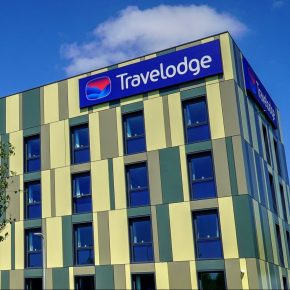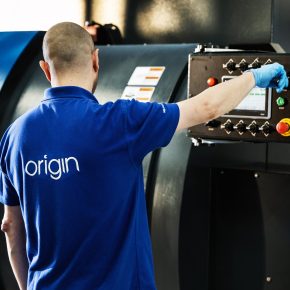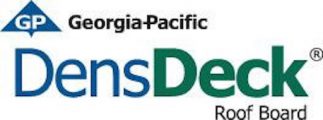
DensDeck Cover Boards Can Improve Roof Performance in Mission Critical Environments
DensDeck roof cover boards, from Georgia-Pacific, are installed between the waterproofing and insulation layers of a flat roof system. In this position, they can help improve the roof system’s resilience when faced with repeated, extreme or frequent wind and rain events and potential outbreaks of external fires. These events can lead to damage to the flat roof build up, building and its contents resulting in costly downtime.
In a mission critical environment where the key driver is to keep the facility operating 24/7 without interruption, a key specification consideration for the roofing systems is to select those components that minimise the risks of such downtime occurring.
Risk factors
To better understand the risk factors in mission critical buildings, we should look at the data published by Data Centre Frontier in January 2016. Structure Monitoring Technology (SMT Research LTD) reported that two out of the top five unplanned data centre outages were caused by environmental threats that resulted in flooding or leaks, elevated humidity levels or fire outbreak.
The same source quotes that 40% of all building performance problems arise from moisture penetration, usually via the roof. Aside from leaks, latent water and moisture collecting on low slope and flat roofs, also referred to as ponding, can also contribute by damaging the strength of the roof systems and compromising the various elements of the roof build up. This could result in weakened resistance to wind uplift or to subsequent damage caused by foot traffic, hail or flying debris.
Fire is quoted as the second contributing environmental factor, driven by either geographical location in areas where wildfires are likely, or by proximity to other buildings. The specification of roof build ups is changing with an increasing preference for non-combustible building materials. It is not always possible to eliminate combustible elements altogether. Therefore, roof build-ups for mission critical projects must meet stringent fire performance criteria.
Two of the most widely used cover boards in mission critical environments are glass mat-faced gypsum core and cement cover boards. We will consider how they can help reduce the risk to data centre roofs and biotech roofs, posed by environmental and other factors, that could impact the building performance and eventually cause operational downtime.
Fire resistance of roof cover boards
Cement, gypsum, and fibreglass are classed as non-combustible materials. This means that both cement and mat-faced gypsum core cover boards can help enhance the fire resistance of a roof build-up when used as fire resistant roof cover boards. Let’s have a look at the science behind this.
The chemical makeup of gypsum makes it highly effective for applications where improved fire resistance is essential. The Gypsum Association says this: “The mechanism is simple science. Calcium Sulfate Dihydrate (CaSO4·2H2O), otherwise known as gypsum, is an inert compound containing up to 21% by weight of chemically combined water. Both natural gypsum and synthetic gypsum share this inherent characteristic, which is leveraged to provide buildings, including homes, with passive fire resistance.”
When a gypsum panel is exposed to high temperatures, the chemically combined water in the core is released as steam. Heat transmission is naturally resisted until this slow process, known as calcination, is complete.
Both cement and gypsum cover boards can be enhanced with glass fibre mat facers, and these facers can offer an additional line of defence in the case of fire. Cover boards can provide an additional layer of fire resistance to external fires. Where extra fire resistance is required when faced with a fire that starts from within the building, a second board, known as a ‘roof board’ or ‘roof substrate board’, can be positioned over the roof deck that requires fire performance enhancement.
Although most cement and mat-faced gypsum boards are classified to EN 13501-1 as class A, this should be verified against the manufacturer’s technical documentation. Manufacturers who have documentation for products certified by third-party insurance testing providers, such as FM Approvals, can bring extra reassurance to the specifier, as the fire performance approval testing, for complete assemblies, required by insurers can often exceed the requirements of local building regulations.
Moisture resistance of roof cover boards
Both types of cover boards are typically resistant to mould. Some boards are designed to resist moisture and moisture vapour. The actual performance should be checked against the manufacturer’s technical sheets.
If the moisture penetrates through cover boards, this may compromise the board’s structural integrity and flexural strength. Associated issues are material failure and wind uplift vulnerability. In the case of cementitious cover boards that are designed to absorb moisture, the board weight will increase according to the level of moisture absorbed.
Reduced maintenance and lower lifetime cost with roof cover boards
Cover boards also provide a firm, flat and stable surface to which a waterproofing membrane can be adhered or mechanically fixed. The cover board helps remove any irregularities other substrates may have, resulting in a more aesthetically pleasing finish. The coated glass mat facers promote a more homogenous spread of adhesives to help ensure a stronger bond with the roof membrane. The facers can also increase material compatibility and help prevent blistering of roof membranes.
A cover board offers some extra rigidity when compared to insulation. It, therefore, becomes a firm, stable substrate for the waterproofing layer to be fixed or adhered to. The rigidity of the cover board can also increase the overall stability of the whole roof assembly as it is fixed to the deck, which in turn increases resistance to wind uplift.
The even surface forms a platform that helps safeguard the waterproofing membrane from accidental penetration, helping to prevent moisture from entering the build-up and potentially damaging the insulation layer and compromising the whole roof system. As a result, the maintenance requirements for the roof could be reduced, and its life cycle extended.
If the insulation layer within the roof build-up becomes compressed, indentations can form. This can lead to water accumulation that can sit in these ‘ponds’. If a roof suffers from ponding, the membrane can come under increased attack from UV etc., as the standing water ‘amplifies’ the sun. Cover boards can help prevent this by helping safeguard the insulation layer from compression.
Improved acoustics with roof cover boards
Both types of cover boards are frequently specified for train stations, airports, and buildings where the management of acoustic risk is critical for users’ comfort. Some manufacturers of cement boards claim that the high mass of cement boards implies that they are better suited to acoustic control. A high level of performance can be achieved with the lighter mat-faced gypsum core cover board when used as an acoustic flat roof board.
As is the case with fire performance improvements, the roof or cover boards can be installed in two positions within a roof assembly, and each will have a different impact on the acoustic performance. The exact design of the roof build and placement of the gypsum core board will reflect the project’s specific acoustic requirements. Acoustic testing will confirm that the roof build-up satisfies the design requirements.
Which roof cover boards can increase the performance of roofs in mission critical environments
As we have seen, specifying strong, flat, non-combustible roof cover boards, like glass mat faced gypsum, can help increase the performance of roofs in mission critical buildings and reduce the risk from threats that could cause unwanted and very costly operational downtime.
Georgia-Pacific has a range of A1 classified, non-combustible*, mat faced gypsum core boards that are widely specified for use in mission critical environments. They are available as both roof cover boards and roof substrate boards, and to learn more about their use in mission critical buildings, download the company’s whitepaper or contact one of the team today.
*in accordance with EN 13501-1 and as described and tested in ASTM E136.
Georgia-Pacific Building Products
133 Peachtree Street, NE, Atlanta
GA 30303
(USA) 1-800-225-6119
Visit Supplier's page
Latest news

21st November 2024
Altro distils style and performance at English Spirit
English Spirit Distillery has used an extensive package of Altro products front and back of house, in their new visitor centre café, shop and viewing area for the working distillery.
Posted in Articles, Bathrooms, Bedrooms & Washrooms, Building Industry News, Building Products & Structures, Building Systems, Case Studies, Floors, Interior Design & Construction, Interiors, Kitchens, Restoration & Refurbishment, Retrofit & Renovation, Timber Buildings and Timber Products, Walls
21st November 2024
Abloy UK creates bespoke locking solution for Secure Information Boxes
Abloy UK has supplied The Safety Letterbox Company Ltd with a bespoke Sentry CL811 Camlock for use in its Secure Information Boxes, assisting life safety and complying with new regulations and legislation for high rise buildings.
Posted in Access Control & Door Entry Systems, Architectural Ironmongery, Articles, Building Industry News, Building Products & Structures, Building Regulations & Accreditations, Building Services, Case Studies, Facility Management & Building Services, Health & Safety, Posts, Restoration & Refurbishment, Retrofit & Renovation, Security and Fire Protection
20th November 2024
CUPA: CUPACLAD enhances hotel aesthetics with a creative natural slate façade
Situated at the northern edge of a newly developed retail park near Bristol, the Abbey Wood Travelodge was conceived as part of the company’s new Budget-Luxe line of hotels – it features CUPACLAD, from CUPA PIZARRAS.
Posted in Articles, Building Industry News, Building Products & Structures, Building Systems, Case Studies, Cladding, Concrete, Cement, Admixtures, Facades, Posts, Restoration & Refurbishment, Retrofit & Renovation, Walls
20th November 2024
Origin launches in-house powder coating facility
Origin’s latest investment is set to redefine industry standards as it launches its own in-house powder coating facility.
Posted in Aluminium Products, Articles, Building Industry News, Building Products & Structures, Building Systems, Doors, Glass, Glazing, Innovations & New Products, Paints, Coatings & Finishes, Restoration & Refurbishment, Retrofit & Renovation, Site Preparation, Windows
 Sign up:
Sign up: 